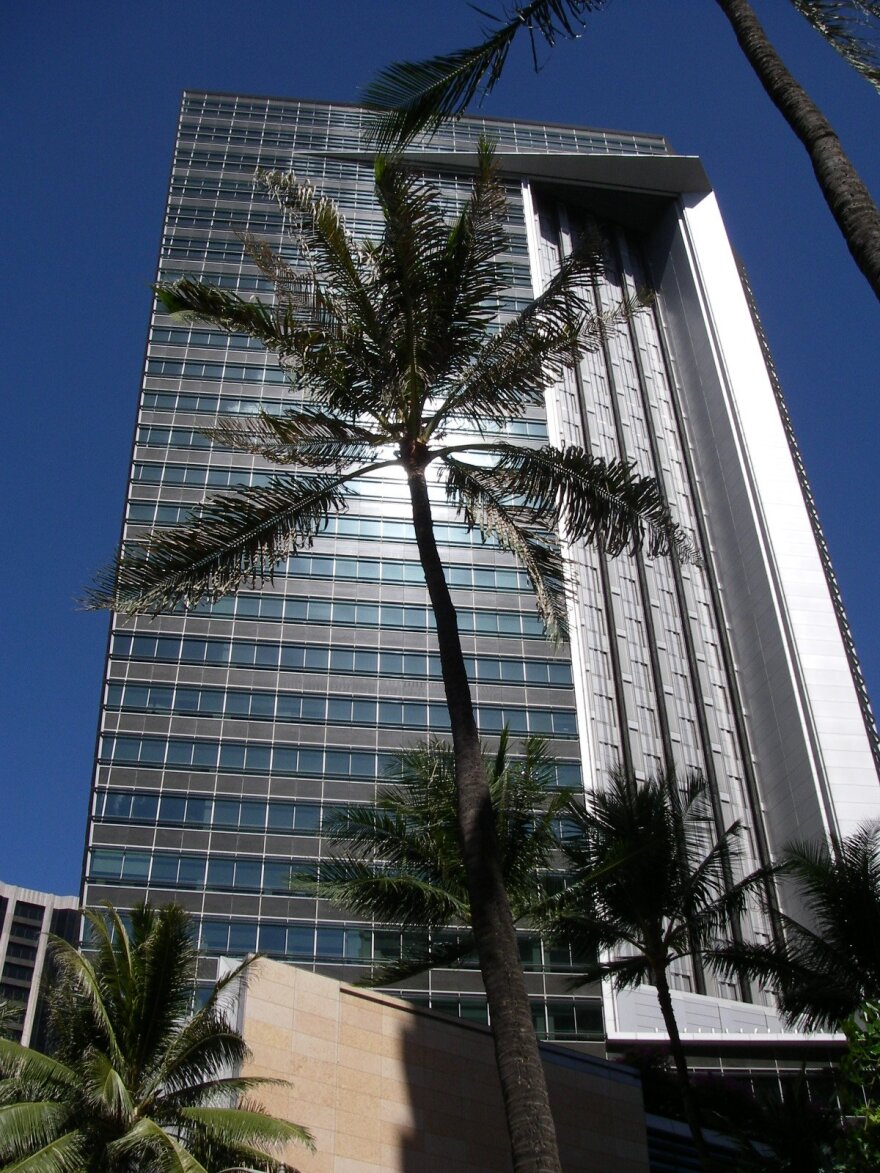Hawai‘i’s banks made the news late this year because of some pay adjustments. The top five banks in the state are giving their employees bonuses of a thousand dollars or more—and boosting their minimum wages to at least 15 dollars an hour. But for shareholders, it’s a different story. HPR’s Bill Dorman has more on the year in Hawai‘i’s financial stocks.
This year’s holiday season carried a financial benefit for a lot of local workers in the banking sector.
Within the last week, Bank of Hawai‘i, American Savings Bank, Central Pacific and Territorial Savings Bank all announced $1,000 bonuses for most employees. First Hawaiian did 1,500.
In addition, the banks all boosted their minimum wages to 15 dollars an hour for Bank of Hawai‘i, First Hawaiian and Territorial Savings. $15.25 for ASB and Central Pacific.
That’s in the neighborhood of a 20 percent raise for many minimum wage workers, and a bit more in some cases.
The starting point for the moves was the cut in the federal corporate tax rate—from 35 percent to 21 percent.

But the moves also reflect a tightening competition for employees in the financial sector, on the cusp of what’s expected to be another year of economic expansion, and this part is new—a full year of rising interest rates.
Historically, that helps the balance sheets of banks—as well as their stock prices. But here’s where local banks have not followed the mainland trend.
The Dow Jones U.S. Financial Index is wrapping up 2017 with a gain of more than 15 percent.
But for shareholders of local banks, it’s been a disappointing year, and mostly a negative one.
Bank of Hawai‘i, Central Pacific, and Territorial Bank are set to finish 2017 with declines in their stock prices in the range of 2 to 4 percent on the year. First Hawaiian is down about 15 percent—although it has bounced off its 52-week low since September.
The outlier among the banks is the one that does not trade as its own company.
American Savings Bank is reflected as part of its parent company—Hawaiian Electric.
And the shares of the utility are set to finish the year with a gain of about 9 percent.




